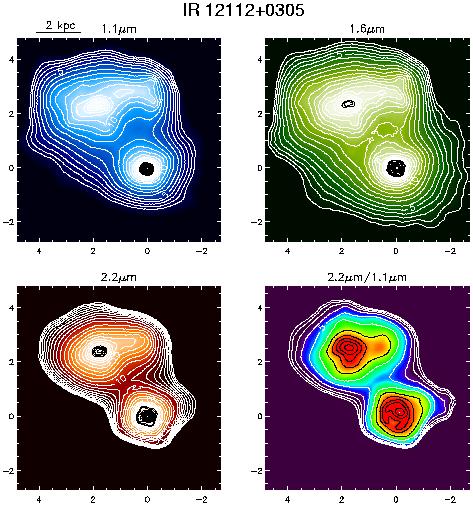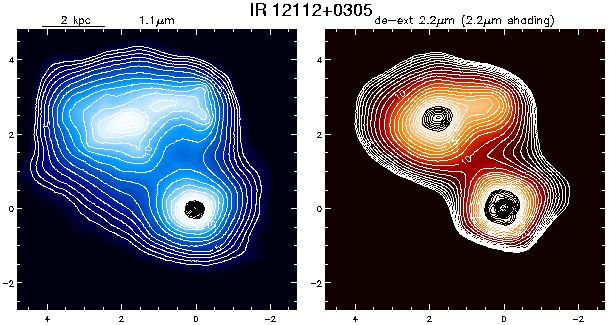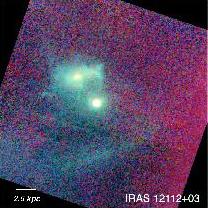


The two well-separated nuclei in this system were first observed
by Carico et al. (1990b), and are apparently connected by a bridge of
emission, and a tidal tail 4" SW of the southern nucleus. The
northern nucleus is crescent-shaped (like that in Arp 220) and this may
indicate the presence of an embedded opaque dust disk (see above). The
southern nucleus becomes
increasingly point-like at the longer wavelengths and both nuclei are much
redder than the surrounding galaxy. Optical
imaging reveals a northern counter-tail (Surace et al. 1998b) while
ultraviolet imaging reveals the presence of significant obscuration along
the line of sight to the southern nucleus, as well as young star-forming
clusters embedded in the southern tail (Surace & Sanders 1999c).
Shaded contour plots of the extinction corrected
2.2 µm emission are shown together with the 1.1
µm (upper left)
observed emission. In both panels, the contours and shading are
logarithmic with the contours spaced by factors 21/2. (The level
values are the same as for the figure above). The arcsec displacements
in RA and DEC, given along the borders are measured from the 2.2
µm in
all frames. At the upper left, a length bar is drawn. For the ratio image,
both the 2.2 and 1.1 µm images were smoothed with the same adaptive
smoothing and then smoothed with a Gaussian FWHM = 0.2" in
calculating the 2.2 µm opacity from Eq. 3 (see text). In
cases where a
strong point-source or variable background contaminated the 2.2 µm
image, the extinction corrected image was derived for 1.6
µm. For the
galaxies with strong point-sources, the PSF was fit to the source and then
subtracted and replaced by a Gaussian with the proper integrated flux (see
text - NGC 7469, IRAS 08572+3915, IRAS 05189-2524, PKS 1345+12, IRAS 07598+6508, Mrk 1014 and 3C48).


